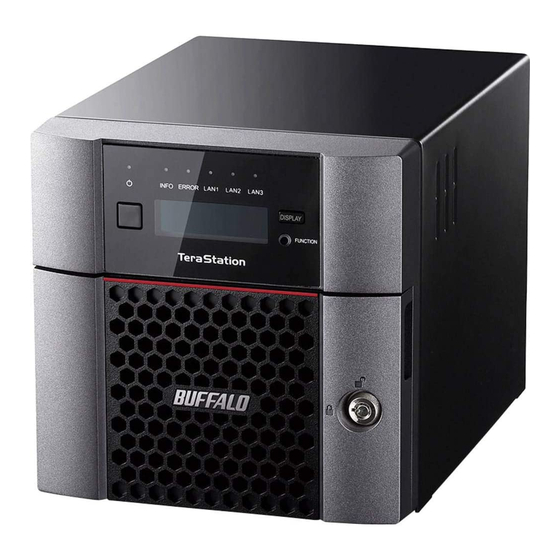
Table of Contents
Advertisement
Network Attached Storage
TeraStation 5010
User Manual
Please make sure to read this manual before using and follow the procedures. If you have any inquiries about
the product, contact the number on the warranty statement or the packing box. Do not discard this manual, the
warranty statement, or the packing box.
Americas: www.buffaloamericas.com
Europe: www.buffalo-technology.com
Asia Pacific: www.buffalo-asia.com
35021131-09
2017.04
Advertisement
Table of Contents















Need help?
Do you have a question about the TeraStation 5010 TS5210DN and is the answer not in the manual?
Questions and answers